Intestinal obstruction (pediatric) - series
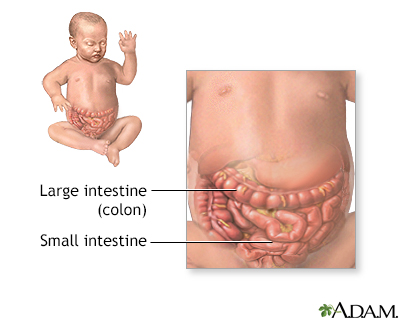
Normal anatomy
The small intestine is basically a long tube through which digested food passes.
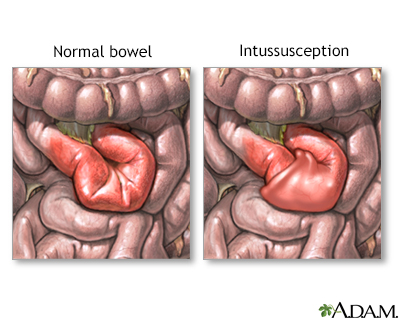
Indications, part 1
Intussusception is a common cause of bowel obstruction in children. It occurs when a segment of small bowel "telescopes" on itself, thus causing swelling, obstruction, and eventually intestinal gangrene.
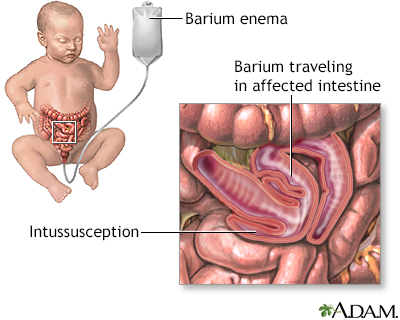
Indications, part 2
Intussusception is suspected if the child has experienced sudden, severe abdominal pain, blood and mucous in the stool, and vomiting. Abdominal X-rays are usually taken to confirm the diagnosis. A barium enema may be used for diagnosis. Barium, a heavy, radio-opaque dye, is administered through the rectum, fills the bowel, and allows for visualization of the bowel by x-rays. This procedure is sometimes successful in correcting the problem - the weight of the barium itself in the bowel frequently reduces the telescoped bowel. If intussusception is diagnosed and not corrected by barium enema, surgery is necessary IMMEDIATELY to prevent complications such as obstruction, gangrenous bowel and peritonitis.
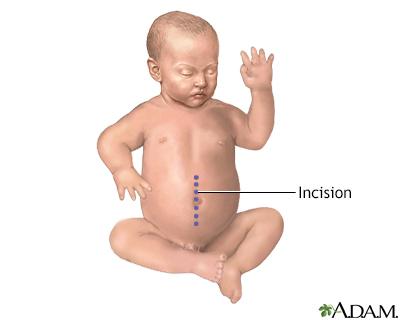
Incision
While the child is deep asleep and pain-free (using general anesthesia), an incision is made in the abdomen, usually in the midline. The bowel obstruction site is located, the obstruction is relieved, and the bowel is examined for injury. Injured sections are removed and the healthy ends of the bowel are either stitched together or brought out onto the abdomen temporarily (colostomy).
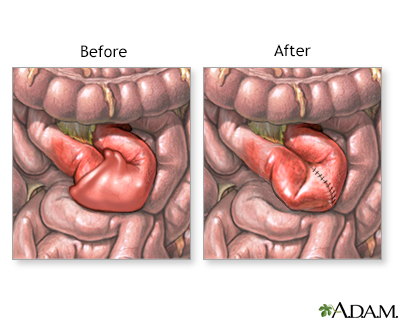
Aftercare
Generally, patients are able to go home within 5 to 10 days after surgery, depending on how long it takes the intestines to recover from the surgical procedure.
BACK TO TOP
Review Date: 2/28/2022
Reviewed By: Debra G. Wechter, MD, FACS, General Surgery Practice Specializing in Breast Cancer, Virginia Mason Medical Center, Seattle, WA. Also reviewed by David Zieve, MD, MHA, Medical Director, Brenda Conaway, Editorial Director, and the A.D.A.M. Editorial team.

Health Content Provider
06/01/2025
|
A.D.A.M., Inc. is accredited by URAC, for Health Content Provider (www.urac.org). URAC's accreditation program is an independent audit to verify that A.D.A.M. follows rigorous standards of quality and accountability. A.D.A.M. is among the first to achieve this important distinction for online health information and services. Learn more about A.D.A.M.'s editorial policy, editorial process and privacy policy. A.D.A.M. is also a founding member of Hi-Ethics. This site complied with the HONcode standard for trustworthy health information from 1995 to 2022, after which HON (Health On the Net, a not-for-profit organization that promoted transparent and reliable health information online) was discontinued. |
The information provided herein should not be used during any medical emergency or for the diagnosis or treatment of any medical condition. A licensed medical professional should be consulted for diagnosis and treatment of any and all medical conditions. Links to other sites are provided for information only -- they do not constitute endorsements of those other sites. © 1997- 2024 A.D.A.M., a business unit of Ebix, Inc. Any duplication or distribution of the information contained herein is strictly prohibited.
